We’re fascinated by how wine regions, young and old, develop reputations. As we prepared to open the bottle of Cahors that had been waiting for this month’s #Winophiles event, we browsed through various wine books to see how the image of Cahors wines has evolved, and where it stands.
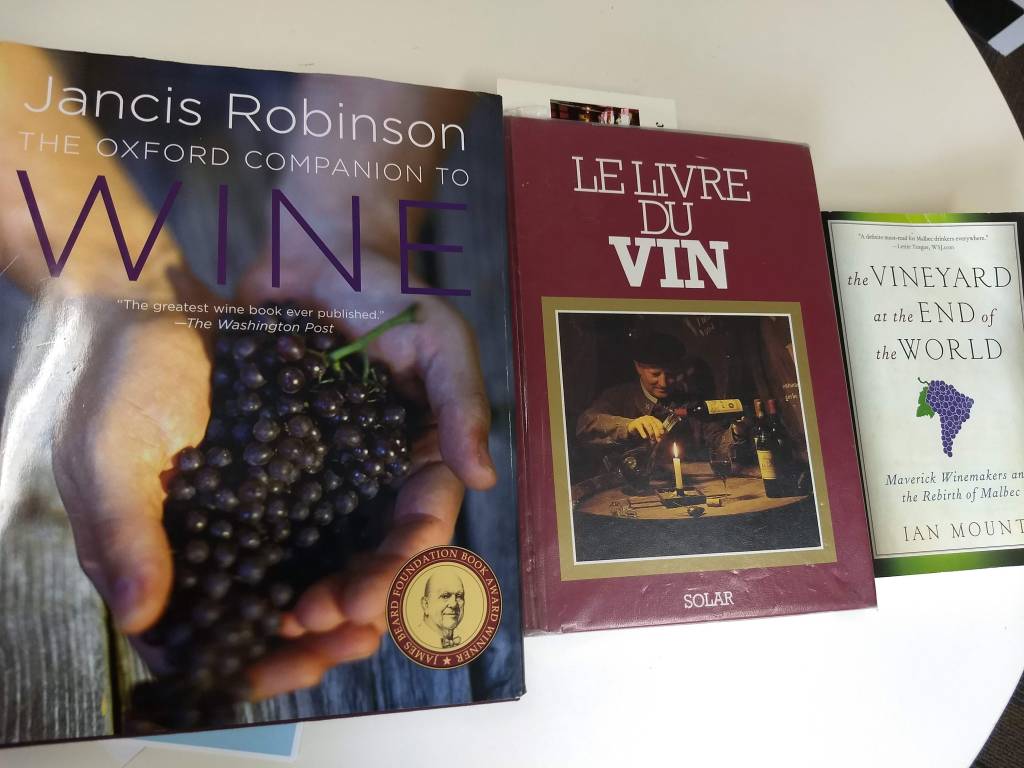
The oldest we have, a French book from 1987 called Le Livre du Vin, was devoted mostly to French wine, but there was a little bit at the end on wines of the world. Argentina got a third of a page, which was not bad at all given that the country would take some more years to find its place on the global wine stage. The word “Malbec” appeared once, in passing, on the list of red grape varieties, with no further discussion. Earlier in the book, in the Sud Ouest chapter, Cahors got a page and a half. It’s interesting to reflect on this next to the much more recent (2012) American book by Ian Mount, The Vineyard at The End of The World, a fantastic account of the rise of Argentina in the wine world, and the rediscovery of Malbec, which would become the country’s signature variety. There, Cahors gets about two pages, notably focused on the fact that by that point, the region had serious Argentina envy, desperately trying “to steal a little of Argentina’s glitter” with a new marketing approach: Cahors, the Original Malbec! As the author put it: “Rarely has the battle between New World and Old so clearly gone in the direction of the child.”
Let’s look at the idea of Cahors a bit more in between these two time periods for a minute. If you were someone getting into wine in the year 2000, you may have picked up this wonderful book by Jancis Robinson:
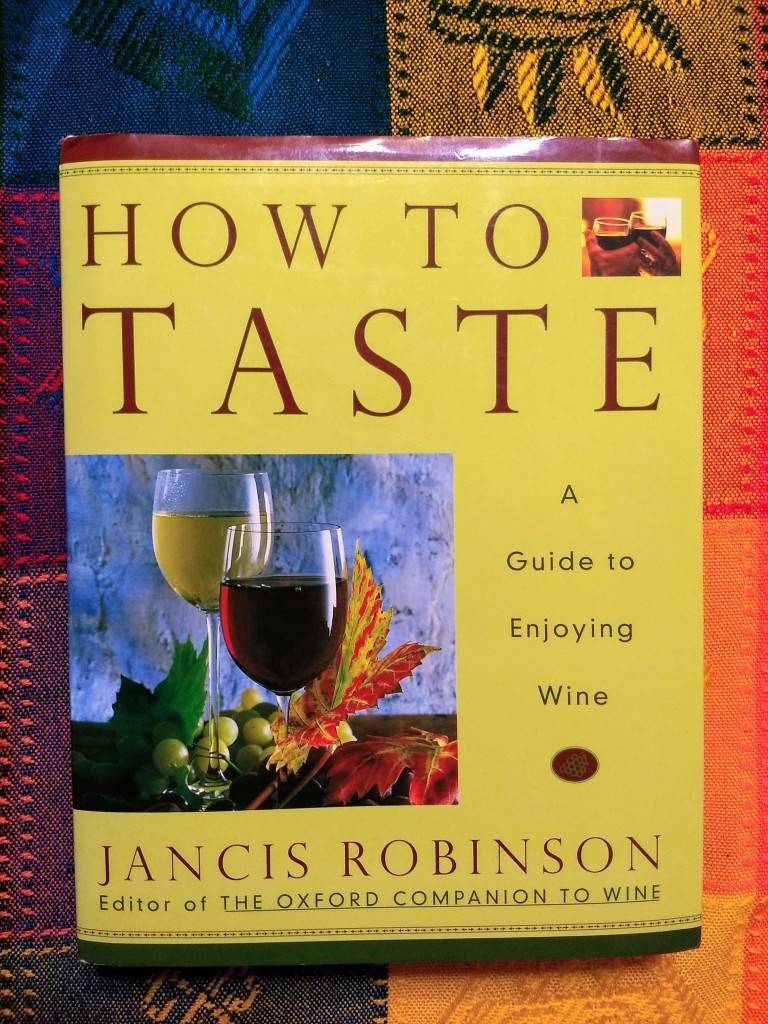
What would you have learned about Cahors in this 2000 book?
“Malbec – so much better in Argentina.”
Ouch! Especially when you think that in 2000, Argentina was barely beginning to break through, and wine writers were still surprisingly harsh on many of the wines they reviewed. A few lines below, master Jancis continues, informing readers that in Mendoza, “Malbec produces wines that are full of extract and drama with a sort of silky richness that is entirely lacking in any Cahors that has yet come my way.” Did we say ouch already?
What about the 2006 edition of the Oxford Companion to Wine? Here’s how the Cahors entry begins: “increasingly significant region in the Quercy district in South West France.” We learn a great deal about the region’s old history and the wines’ renown in the early Middle Ages, notably thanks to the trade route provided by the river Lot, on to the Garonne and the Bordeaux port, and even evidence of sales in London in the 13th century. And by the 19th century, Cahors wine was so famous that, ultimate flattery, one Russian winery even made imitation Cahors in Crimea! That’s the kind of honor that is reserved today to the best of Bordeaux and Burgundy. Looking back, with a bit more luck, it’s almost as if Cahors could have been put on pedestal, big money interests could have moved in, and who knows where it would be today.
But alas, it didn’t go that way. With the railroad bringing competition of Languedoc wines, and then the phylloxera blight, soon it was bye bye Malbec. A few decades later, efforts were underway to revive the region, but if we get the story from the wine books, it never got back to the point where your news feed would be filled with stories about counterfeit Cahors in China.
Oh, by the way, remember how the Oxford Companion entry in 2006 started with “increasingly significant region in the Quercy district in South West France”? In the following (2015) edition we own on Google Play books, it says: “shrinking wine region in the Quercy district in South West France.” What do you make of that?!
Still, everybody agrees the region has experienced a serious revival, the result of decades of efforts in viticulture, fine tuning of local terroir exploration, winemaking, and promotion. Cahors is easy to find, and not just when we go to Toulouse, but also in the Seattle area, from supermarkets to niche hipster wine shops. There are not as many Cahors choices in your typical American shop as for Mendoza Malbec, but we always know Cahors is available when we want it. In part, of course, this is thanks to the Argentina wine boom that put Malbec on all wine enthusiasts’ radar.
Midweek dinner and wine
This little Cahors wine dinner was very much a last-minute decision in the middle of a busy week. But with Cynthia’s new colleague coming over, we had a great excuse to open our Cahors, and put the Instant Pot to work. Our wine today is Château Eugénie’s Haute Collection 2012. For a really neat introduction to the Cahors terroir, including a walk through the vineyards of Château Eugénie, be sure to read the post by our #Winophiles host Nicole over at Somm’s table.
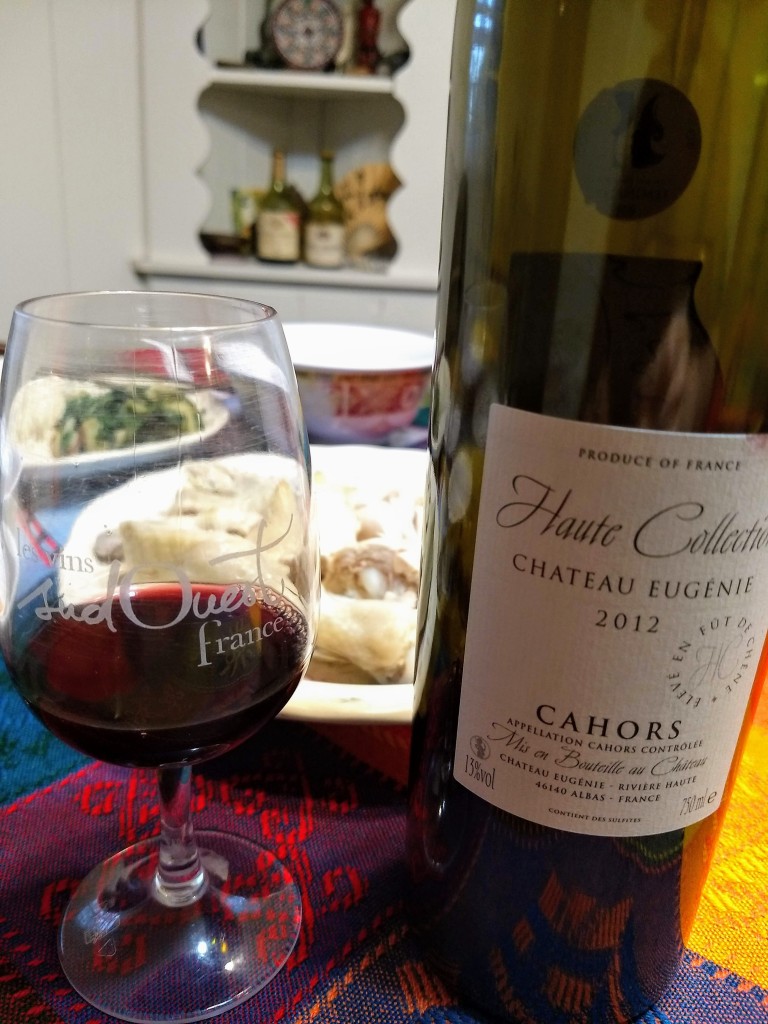
How did we end up with Château Eugénie? Back in August, we were grocery shopping at Carrefour in Toulouse with Pierre’s mom. We thought it wouldn’t be a bad idea to look ahead at the #Winophiles schedule. With no lack of Sud Ouest pride, Cahors was easy to find.
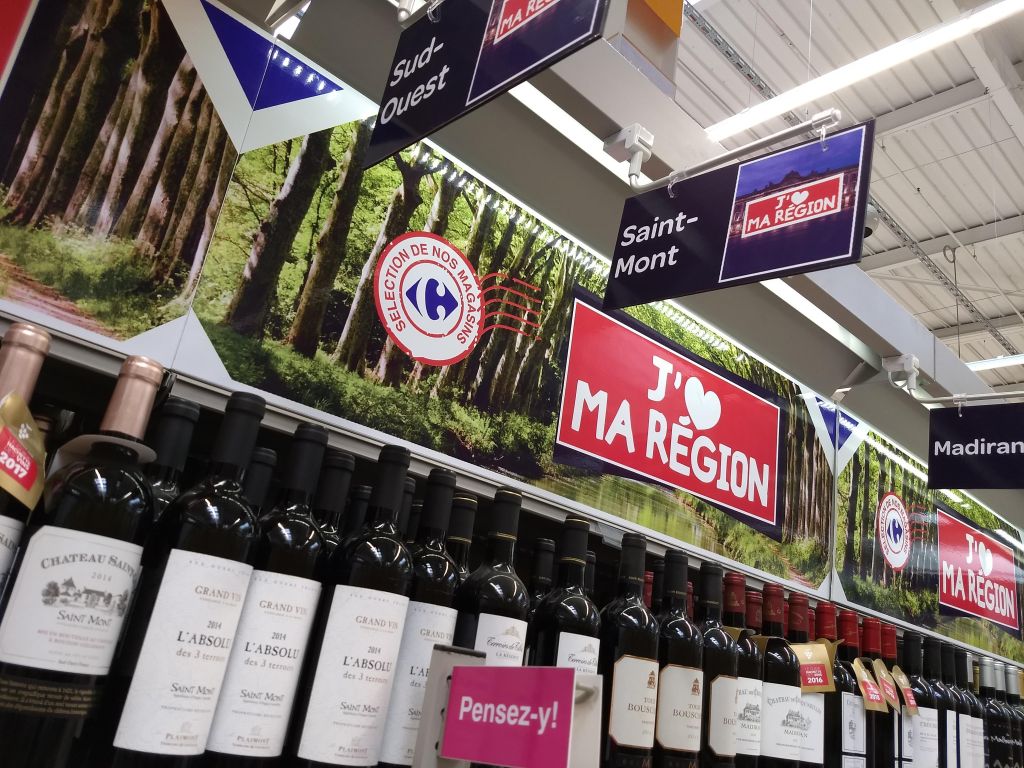
But why this one? We’ll admit it: it was the most expensive, literally on the top shelf in the Cahors section for 24 euros, which is a serious splurge at Carrefour for a French shopper.
We wanted a complete, balanced dinner without fuss. Hainan chicken rice ensured that in no time, we would have a soup, chicken, rice, and some greens. We followed the recipe by Instant Pot gurus Amy and Jacky (a great resource for Pot Heads). It’s very little work. Basically, put roughly sliced ginger, whole green onions and salt in Instant Pot, put whole chicken on top, and fill with water to the max line. And then, press Pressure Cook and set the time at… ZERO minutes. What? That’s right. Surprising, but it works! Amy and Jacky’s genius at work. The idea is that by the time it takes for the IP to come to pressure, and then adding the 25 or so minutes of naturally releasing pressure, the chicken is cooked perfectly, none of it is dry, and you have a great soup (that you might dilute a bit with water if it’s too salty at that point). Then, you can cook rice in the broth (we used our rice cooker so we wouldn’t have to wash the Instant Pot right away), prep some greens, condiments to dip the chicken bites, and voila.
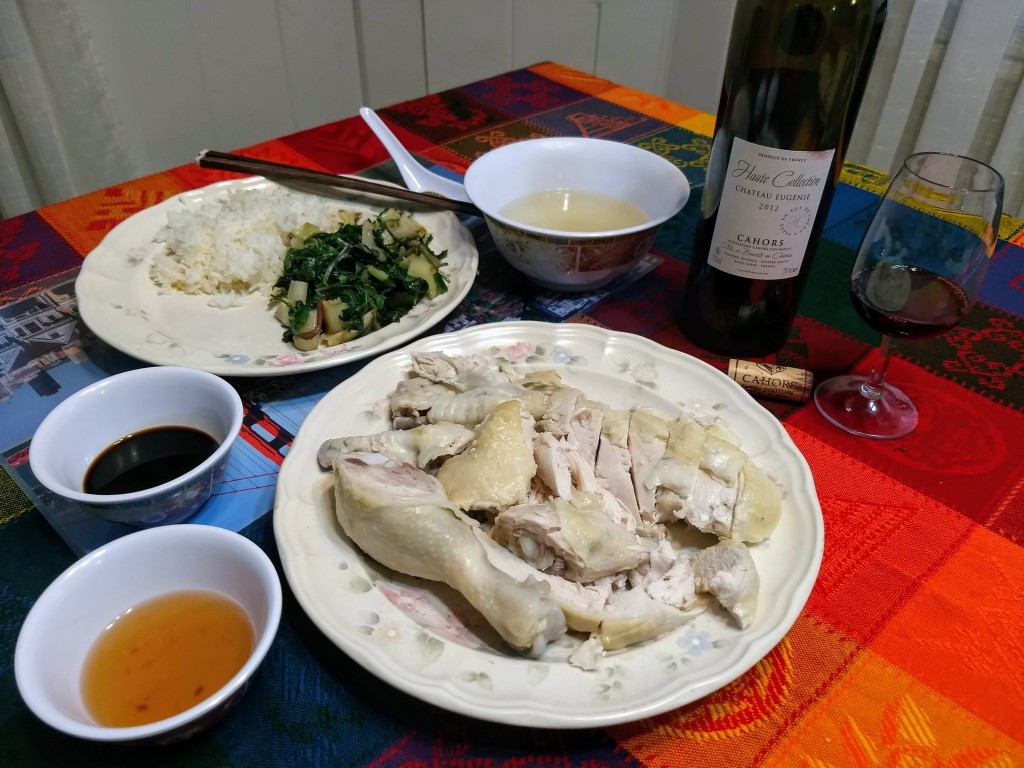
While all this was under way, we took advantage of Cynthia’s latest Charles de Gaulle Airport duty free impulse purchase, an assortment of rillettes that worked great with our first sips of the dark Cahors.
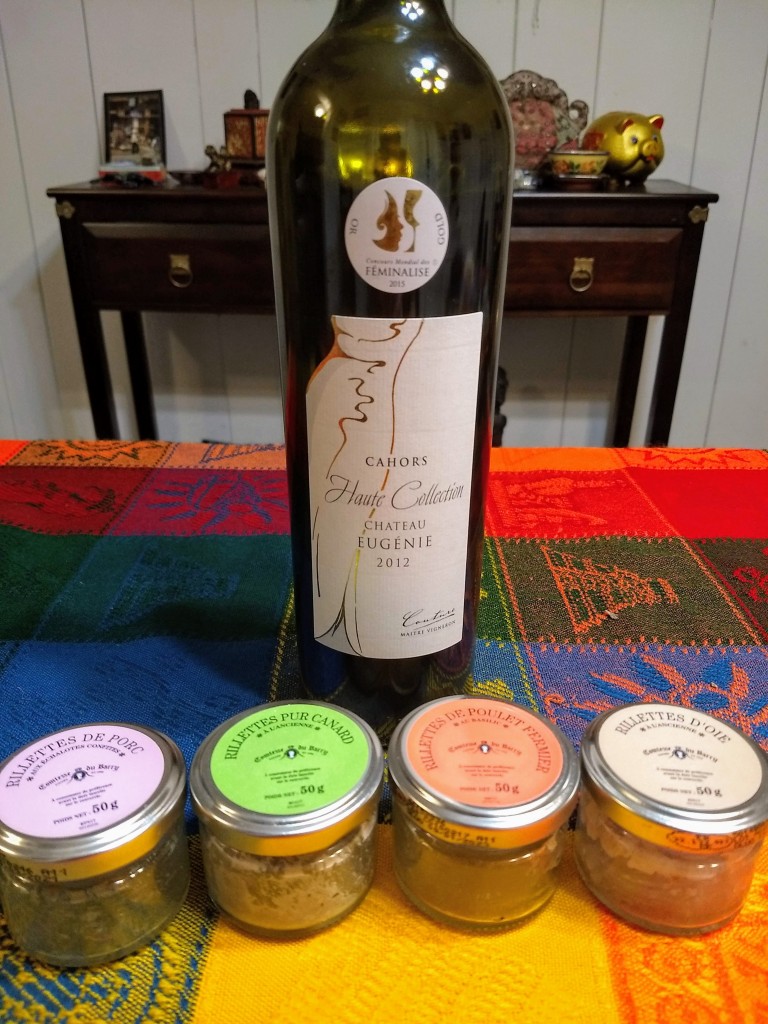
The wine being seven years old, tannins were no longer as firm as you’d find in some younger Cahors. This is still a big wine, with notes of dark fruit, oak, and leather, but balanced with refreshing acidity. It continued to work well throughout the dinner as we dipped our pieces of chicken into our soy sauce and fish sauce condiments. You’re supposed to get a bit fancier than that on the condiments with Hainan chicken rice, but we had no time, so we made what was easiest off the top of our head.
Over the years, we’ve had Cahors with many Sud Ouest foods, including foie gras sandwiches at an outdoor market, duck magret, and cassoulet. But Hainan chicken rice worked great, and so would many other non-Sud-Ouest dishes in our rotation.
Thanks to Nicole from Somm’s Table for hosting this month’s #Winophiles event. If you see this in time, please consider joining our chat at 10AM CDT on Saturday, Oct. 19 at the Twitter hashtag: #winophiles. Be sure to check out all the wonderful ideas on Cahors wine and foods to match by the Winophiles crew:
- Jane from Always Ravenous explores the “Flavors of Fall Paired with Cahors
Malbec” - Cathie of Side Hustle Wino looks at “Cahors – TheBirthplace of Malbec”
- Jill from L’Occasion shares “Cahors, a French Classic”
- Camilla of Culinary Adventures with Camilla will be posting “Château du Cèdre
Extra Libre 2018 Malbec + Cider-Braised Chicken Thighs” - Wendy Klik of A Day in the Life on the Farm samples “A Trio of Cahors Wine and the
Pairings Served” - Jeff of FoodWineClick! gives us “The Malbec You Never Knew: Cahors”
- Linda of My Full Wine Glass shares “Newbies to Old-World Malbec Discover Cahors”
- Cindy of Grape Experiences explores “The Old-World Style of Malbec from Cahors”
- Deanna of Asian Test Kitchen gives us “French Malbecs Meet Chinese Duck”
- Gwen from Wine Predator shares “From
Cahors: Biodynamic Chateau du Cedre Malbec with French Charcuterie” - Pinny of Chinese Food & Wine Pairings matches “Cahor Malbecs and Waygu Beef”
- Cynthia and Pierre of Traveling Wine Profs give us “Cahors, Hainan Chicken Rice, and the Stories Wine Books Tell”
- Susannah of Avvinare will be “Shedding Light on Old World Malbec from Cahors”
- Payal of Keep the Peas discusses “Cahors: What Put Malbec on the Map”
- Rupal of Syrah Queen will posting “Cahors – Tasting “Black Wines” With The Original Malbec”
- David of Cooking Chat pairs “Mushroom Truffle Risotto with Cahors Malbec”
- Nicole of Somm’s Table shares “Bringing Home Cahors with Clos D’Audhuy”
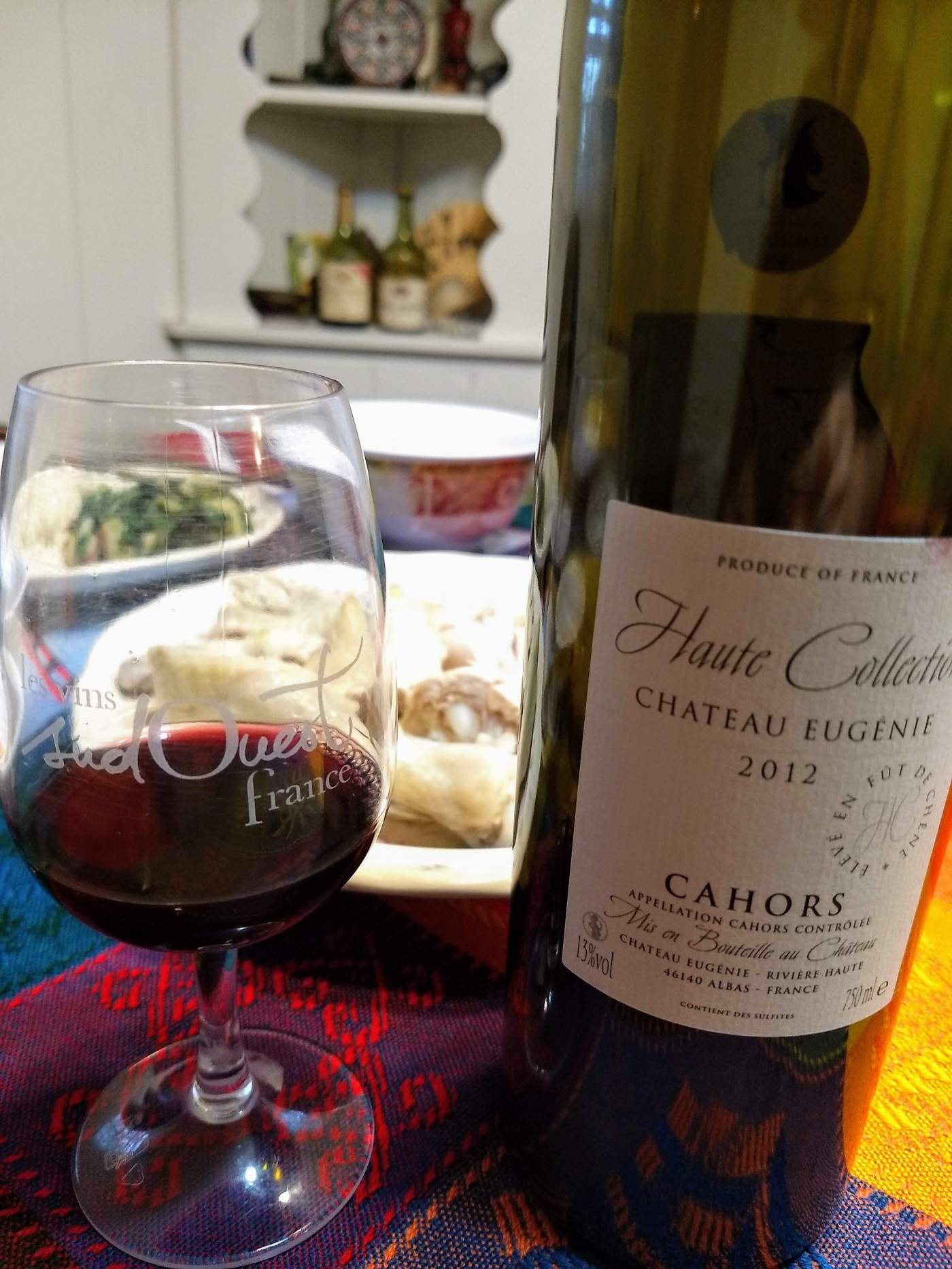
Who knew that 24 euro is a splurge for a French shopper! I feel like that would still be considered a “cheap” bottle where I live. Very cool to hear how often you have actually had Cahors and with foie gras sandwiches. However, I’ll look forward to trying with Hainan chicken rice, one of my favorite chicken dishes. Nice choice!
LikeLike
What an interesting recipe. I am going to try that instant pot trick very soon.
LikeLike
Great history on a neglected corner of the French wine landscape. Let’s hope Cahors gets the notice it deserves!
LikeLike
I love this post! So interesting to go through the various takes on the region through the years. Happily geeking out with this read. It was interesting to hear the perspectives in the region over Argentine Malbec. It seems that after that initial period of envy, they got on board with taking notes from Argentina. Now there are a lot of interesting collaborations and joint projects between the two regions. (For example the Crocus Wines: http://www.sommstable.com/2017/07/cooking-to-wine-paul-bertrand-crocus.html). I also love Hainan Chicken Rice so all about that as well.
LikeLike
Also, thanks for the shout out!
LikeLike
Very interesting recipe. Certainly something I’m going to try!
LikeLike